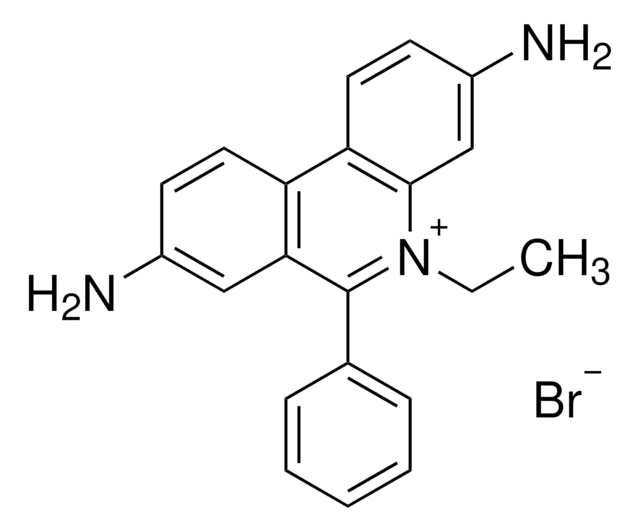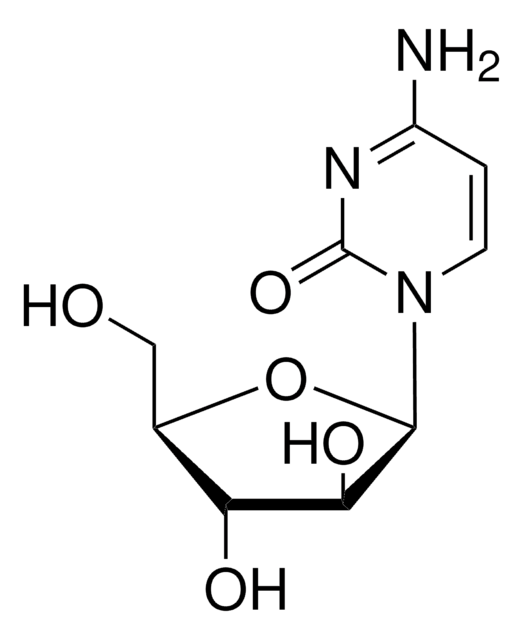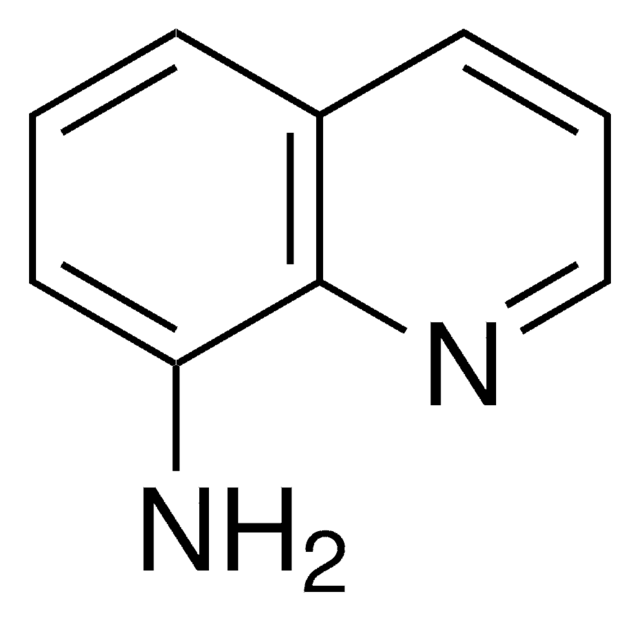A8986
Alexidine dihydrochloride
≥95% (HPLC)
Sinonimo/i:
1,1′-Hexamethylene-bis(5-[2-ethylhexyl]biguanide)
About This Item
Prodotti consigliati
Livello qualitativo
Saggio
≥95% (HPLC)
Stato
powder
Condizioni di stoccaggio
desiccated
Colore
white to off-white
Solubilità
DMSO: ≥10 mg/mL
Temperatura di conservazione
−20°C
Stringa SMILE
Cl.Cl.CCCCC(CC)CNC(=N)NC(=N)NCCCCCCNC(=N)NC(=N)NCC(CC)CCCC
InChI
1S/C26H56N10.2ClH/c1-5-9-15-21(7-3)19-33-25(29)35-23(27)31-17-13-11-12-14-18-32-24(28)36-26(30)34-20-22(8-4)16-10-6-2;;/h21-22H,5-20H2,1-4H3,(H5,27,29,31,33,35)(H5,28,30,32,34,36);2*1H
BRJJFBHTDVWTCJ-UHFFFAOYSA-N
Cerchi prodotti simili? Visita Guida al confronto tra prodotti
Applicazioni
- as an antiseptic to study its antimicrobial activity in saliva-derived microcosm biofilms
- as a protein tyrosine phosphatase localized to the mitochondrion 1 (PTPMT1)-specific inhibitor to study its effects on spare respiratory capacity and viability of CD8+ T cells
- as a PTPMT1 inhibitor to study its antiviral effect on human cytomegalovirus (HCMV) replication in HCMV-infected human foreskin fibroblast (HFF) cells
Azioni biochim/fisiol
Caratteristiche e vantaggi
Avvertenze
Warning
Indicazioni di pericolo
Consigli di prudenza
Classi di pericolo
Eye Irrit. 2 - Skin Irrit. 2 - STOT SE 3
Organi bersaglio
Respiratory system
Codice della classe di stoccaggio
11 - Combustible Solids
Classe di pericolosità dell'acqua (WGK)
WGK 3
Punto d’infiammabilità (°F)
Not applicable
Punto d’infiammabilità (°C)
Not applicable
Scegli una delle versioni più recenti:
Possiedi già questo prodotto?
I documenti relativi ai prodotti acquistati recentemente sono disponibili nell’Archivio dei documenti.
I clienti hanno visto anche
Articoli
Sigma-Aldrich offers many products related to phosphoprotein phosphatases (Tyrosine) for your research needs.
Il team dei nostri ricercatori vanta grande esperienza in tutte le aree della ricerca quali Life Science, scienza dei materiali, sintesi chimica, cromatografia, discipline analitiche, ecc..
Contatta l'Assistenza Tecnica.











